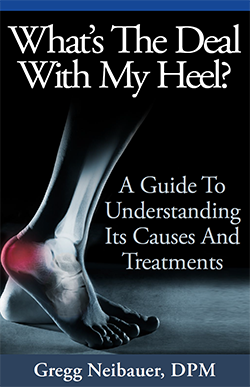
Are you tired of heel pain haunting your steps? It’s not just you—this common foot problem affects approximately 10 percent of people at some point and generates more than 1 million visits to medical professionals each year.
Don’t ignore heel pain or let it keep you from doing what you love. Give your feet world-class care right here under the Big Sky.
Located in Missoula, Alpine Foot & Ankle Clinic helps patients in Montana and northern Idaho kick pain to the curb. Board-certified podiatrist Dr. Gregg Neibauer provides patient-focused care that prioritizes the latest, most effective non- and minimally invasive treatments for relieving heel pain, including revolutionary Shockwave (EPAT/ESWT) and laser therapies.
Painful Heel Conditions We Address
Heel pain has numerous mechanical, traumatic, neurologic, and systemic causes. Obesity, inappropriate footwear, and prolonged standing can increase your risk of persistent heel pain and discomfort.
Without proper diagnosis and treatment, heel pain can be challenging to overcome. Fortunately, Dr. Neibauer uses state-of-the-art technology and more than two decades of podiatry practice to pinpoint the precise cause of your pain and recommend the most advantageous therapeutic options.
Here are some examples of the painful heel conditions we treat at our Missoula office:
- Achilles tendonitis. The Achilles tendon is the thick band of tissue that connects the calf muscles to the back of the heel bone. Overuse injuries can cause the tendon to become inflamed, resulting in pain, tenderness, and swelling that runs down the back of your leg and stops above your heel.
- Bone bruises. Direct impact to the heel can result in painful inflammation that could potentially contribute to the development of a calcaneal stress fracture.
- Bursitis. When the fluid-filled sac, or bursa, between the heel bone and Achilles tendon becomes inflamed, you could experience redness, tenderness, swelling, pain, and restricted range of motion.
- Calcaneal stress fractures. Tiny cracks in the heel bone can cause pain, swelling, and bruising along the back, sides, and bottom of the heel. Stress fractures can be painful during activity or rest and make it difficult to bear weight on the affected foot.
- Fat pad atrophy. The fatty cushioning in your heel can break down over time, decreasing shock absorption and causing tenderness, pain, and discomfort.
- Haglund’s deformity. Often related to bursitis, this condition is an enlargement of the back of the calcaneal—or heel—bone, where it joins with the Achilles tendon. Also known as a “pump bump,” Haglund’s deformity is famously aggravated by wearing high-heeled shoes like pumps.
- Heel spurs. Bony growths or calcium deposits can form on the underside of the heel bone in response to long-term stress on foot ligaments. These deposits can cause tenderness and dull, throbbing, or sharp pain during activity.
- Nerve entrapment. Pain and discomfort can occur when the tibial, medial calcaneal, or Baxter nerves are compressed in the heel.
- Plantar fasciitis. The plantar fascia is a thick ligament that runs the length of your foot, connecting the heel bone and toes. When the plantar fascia becomes inflamed, you might experience a stabbing pain in the bottom of the foot near your heel. Plantar fasciitis pain is typically worse in the morning or after resting but may ease with activity.
Our Wide-Ranging Treatments for Heel Pain Include Advanced Options
At Alpine Foot & Ankle Clinic, Dr. Neibauer understands that heel pain requires effective and efficient relief. He proudly offers a wide range of treatments to eliminate heel pain and get you back on your feet as swiftly and safely as possible.
Depending on your diagnosis, your personalized heel pain recovery plan might include:
- Custom orthotics. These prescription shoe inserts hold your feet in the ideal position, providing precise support and cushioning to relieve heel pressure and pain.
- Stem cell therapy. Injecting stem cells into painful areas of the heels can reduce swelling and inflammation and encourage damaged tissue to repair itself faster.
- Shockwave (EPAT/ESWT). We use a specialized set of acoustic pressure waves to stimulate metabolism, improve blood flow to the target area, and promote healthy tissue growth.
- Laser therapy. This groundbreaking treatment delivers laser energy to the painful part of your heels, reducing pain and swelling, increasing circulation, and jumpstarting the healing process for a faster, smoother recovery.

